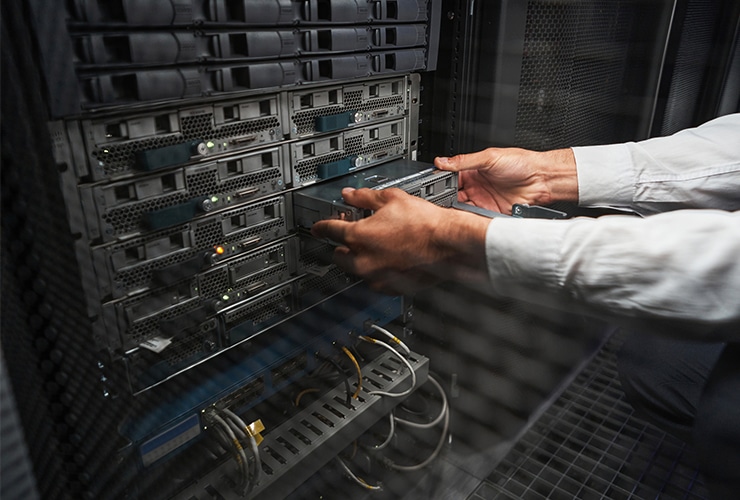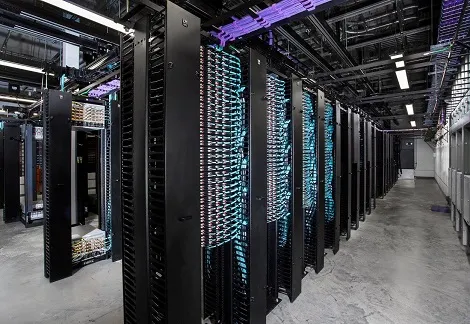How to Prepare Your Data Center for Migration
Businesses are continually adapting to stay ahead. An essential part of this evolution often involves data center migration to enhance performance, improve cost efficiency, or scale infrastructure. However, moving critical IT assets such as servers, network devices, and storage equipment during a data center migration is a complex task that demands strategic planning and precise execution.
A well-structured data center migration ensures minimal downtime, enhanced data security, and a seamless transition without disrupting ongoing business operations. In this blog, we will walk you through the key phases of data center migration, highlight potential challenges, and offer practical solutions to ensure a successful and efficient migration.
Why is Data Center Migration Necessary?
Organizations opt to migrate their data centers for various reasons, including:
- Scalability – Supporting business growth through expanded IT infrastructure.
- Cost Efficiency – Moving to energy-efficient facilities that reduce operational costs.
- Performance Enhancement – Upgrading to modern hardware and software for better performance.
- Disaster Recovery – Relocating to a more secure and resilient environment.
- Regulatory Compliance – Ensuring data security and meeting industry-specific regulations.
No matter the reason, successful migration requires a step-by-step approach that mitigates potential risks and ensures that the transition is smooth and efficient.

Key Phases of Data Center Migration
1. Pre-Migration Survey & Planning
The first phase in data center migration involves a thorough assessment of existing infrastructure and future requirements. This includes:
- Identifying exactly what needs to be migrated, such as servers, applications, databases, and other critical IT assets.
- Determining the budget, timeline, and key success metrics for the migration.
- Performing network dependency mapping to understand how IT assets are interrelated and to identify any potential issues.
- Assessing structural cabling requirements at the destination data center.
- Conducting a Configuration Management Database (CMDB) review to ensure all system configurations are properly documented.
Proper planning in this phase lays the foundation for a smooth transition, minimizing risks and potential disruptions during the migration process.
2. Technical Support & Preparation
This phase is crucial as it ensures the technical readiness of the infrastructure for a seamless migration. Key activities include:
- Pre-migration validation tests to check compatibility and detect potential issues before the actual move.
- Labeling and tagging all hardware components for an organized setup at the new location.
- Pre-installing structured cabling at the destination data center to streamline setup.
- Unmounting and securing equipment servers, network devices, and chassis—before transport.
- Rack alignment planning to optimize airflow and maximize space efficiency.
- Testing connectivity and performance to ensure everything is functioning correctly before shutting down systems for migration.
This phase ensures that all technical dependencies are addressed and that the infrastructure is ready for the physical move.
3. Physical Relocation & Handling
Once the preparation is complete, it’s time for the physical relocation of the IT infrastructure. Critical considerations in this phase include:
- Safe Packing & Transport
- Shockproof and anti-static packaging to protect sensitive equipment during transport.
- Labeling and sealing boxes to ensure quick and accurate identification during reassembly.
- Using climate-controlled vehicles to prevent overheating and protect against environmental damage.
- Forklifts and cranes for moving heavy equipment safely.
- Security & Inventory Tracking
- Ensuring real-time tracking of assets during transit to prevent loss.
- Implementing security protocols and access control to avoid theft or unauthorized access.
- Maintaining inventory logs to verify that all assets have arrived safely at the new location.
By following proper transportation procedures, risks such as equipment damage, connectivity issues, and configuration mismatches are significantly reduced.

4. Deployment & Post-Migration Testing
Once everything is relocated to the new data center, it’s time to get everything up and running. This phase includes:
- Structured Cabling & Rack Installation – Hardware is mounted in designated racks, and airflow is optimized for efficiency.
- Connectivity & Performance Testing – Servers, storage devices, and network switches are tested to ensure they function as intended.
- System Configuration & Validation – Ensuring that software compatibility is maintained, and any necessary backups are restored.
- Final Documentation & Sign-off – Asset inventories are updated, and final configurations are documented for future reference.
This phase ensures that all IT systems are fully operational before the migration is officially complete.
Challenges in Data Center Migration & How to Overcome Them
- Downtime & Disruptions
- Solution: Migrate during off-peak hours, implement phased migrations, and set up parallel systems to minimize downtime.
- Data Loss or Corruption
- Solution: Perform multiple backups before migration and validate data integrity post-move.
- Hardware Damage During Transport
- Solution: Use shock-resistant packaging and climate-controlled transport vehicles to protect equipment.
- Compatibility Issues
- Solution: Conduct thorough pre-migration testing to identify and resolve potential compatibility issues early.
- Budget & Timeline Overruns
- Solution: Set clear migration goals, conduct risk assessments, and have contingency plans in place to manage unexpected issues.

Conclusion
Data center migration is a complex but critical decision that can significantly enhance an organization’s performance, scalability, and efficiency. By following a detailed and methodical approach, businesses can mitigate risks, reduce downtime, and ensure a successful migration with minimal disruptions.
Whether you are upgrading infrastructure, consolidating systems, or moving to a more secure location, a well-executed data center migration ensures long-term success and enhances overall business performance.
